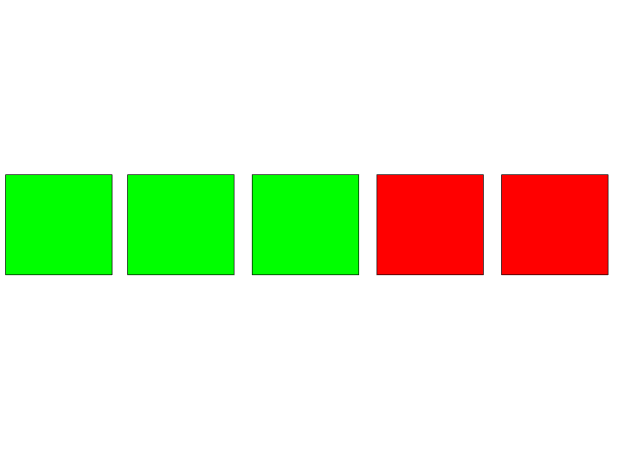Why resist Bitcoin censorship?

One of Bitcoin’s core value propositions is that no matter what happens, if you pay a high enough fee, some miner around the world will confirm your transaction. In other words, Bitcoin is resistant to censorship. There’s a very good reason why the phrase “censorship-resistant” rather than “censorship-proof” is a phrase we hear every time this topic comes up. Any individual miner can censor whatever they want. That means he can refuse to have something included in the blocks he mines. However, this does not prevent other miners from including the transaction in their own block whenever they find it.
Bitcoin is resistant to censorship, but it is not immune. Any miner can censor whatever they want, and if there aren’t enough transactions to pay a similar fee for the transactions they choose to censor, they can do so for free, ignoring the potential opportunity cost of lost revenue. However, this does not prevent the global system from processing those transactions unless the miners 1) make up the majority of the overall network hashrate; 2) You choose to orphan the blocks of every miner who chooses to take advantage of that reality and process transactions(s) you want to censor.
This would result in losing most of the miners involved in the orphan attack fund as long as a small number of miners continue to mine blocks containing “verboten” transactions. Each time such a block is discovered, it essentially increases the time until the next block in the chain is found, lowering most of the average censoring miner’s income. This will continue until the minority gives up and surrenders or goes out of business (since they will forgo profits on every block containing censored transactions).
For now, let’s assume this scenario isn’t in the cards. If so, Bitcoin is either a failure or it will remain this way until non-censorship miners can quietly accumulate enough hashrate to overwhelm the current majority’s intention to orphan blocks containing transactions they do not want to see on the blockchain. It must exist.
So what happens if a small group of miners decide to censor a specific subset of transactions in their blocks? This reduces the amount of block space available for that transaction. There is less block space available than all other transaction classes. What is the end result of this? Fee pressure for this trading class reaches saturation faster than all other trading classes.

To simplify the example, let’s assume that only 10 transactions are needed to fill a particular block. We will simply refer to regular transactions as “regular transactions” and censored transactions as “committed transactions.” On average, 5 blocks are discovered each day, and there are 5 miners. Red blocks represent miners who are not mining verboten transactions, and green blocks represent miners who are mining. For regular transactions to start saturating the available block space and increasing fees, there would need to be more than 50 pending transactions for frenzied bidding to begin to increase fees and increase miners’ profits. At this point, fees generated revenue for: every Miners will start to increase.
For Verboten trades, only 20 or more trades need to be held for a frenzy of bidding to begin and generate commission revenue. However, the commission income from verboten trading is Collect only green miners.
In a situation where Verboten transactions do not saturate the memory pool by exceeding the available block capacity, all miners will receive roughly the same level of income. These verboten transactions must compete with regular transactions to ensure timely confirmation. Therefore, if regular transactions are saturating the memory pool, but verboten transactions are not, the overall fee pressure will be distributed relatively evenly across all miners, and no one will suffer an imbalance. Others do not have access to fee income.
However, if Verboten transactions exceed the available block space and saturate the mempool, that fee pressure will cause the fees paid by Verboten transactions to rise. Only for green miners. Red miners who choose to censor these transactions will not realize the increased fee revenue from verboten transactions. Normal transactions in this scenario do not have to compete with Verboten transactions, which have a fee, except they need to be confirmed in the next block. Therefore, even if the fee pressure of Verboten transactions results in an indirect fee increase in regular transactions, it will not lead to a corresponding increase in revenue. red miner.
Due to this imbalance, green miners earn more per block/hash than red miners. This is a smart incentive and clearly unsustainable. Over time, one of two things will happen. 1) Green miners will reinvest the additional profits they earn and expand their share of the hash rate, or 2) miners will break away from the red side and the green miner group will grow. That way you calculate the percentage of hashrate.

This dynamic of higher fees for green miners causes the hash rate of green miners to increase, whether through reinvestment or the exodus of red miners, until the block space demand of Verboten transactions reaches an equilibrium where it matches that of regular transactions. do. Both groups of miners earn roughly the same income. This balance will persist until the demand from verboten transactions for block space exceeds the level available, and then the entire dance of green miners will continue until the network hash rate grows again to the point of equilibrium of equal fee revenue and more revenue. You get
This dynamic is why Bitcoin resists censorship. This is not because all miners cannot censor something, but because miners are incentivized through market dynamics to include what other miners censor. If some miners censor certain kinds of transactions, this reduces the amount of block space available and increases the fees they are willing to pay. Pure and simple. Unless miners are completely irrational, which calls Bitcoin’s entire security model into question, some will make extra money by including these transactions.


